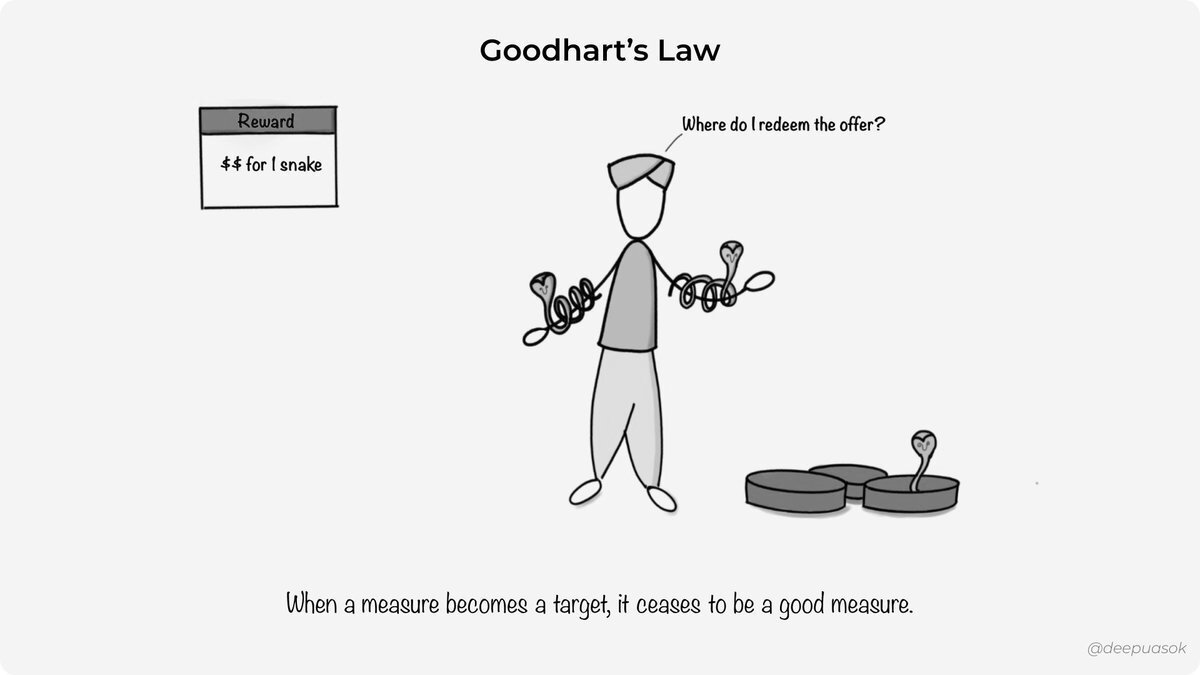Introduction
Goodhart’s Law, a concept coined by economist Charles Goodhart, highlights the pitfalls of using quantitative metrics as proxies for complex systems. This mental model suggests that once a measure becomes a target, it loses its effectiveness, leading to distorted decision-making outcomes. Understanding Goodhart’s Law is crucial for navigating decision-making processes, as it sheds light on the inherent challenges of relying solely on metrics and the unintended consequences that can arise.
Anchoring in Human Psychology
Goodhart’s Law is deeply rooted in human psychology, specifically our tendency to optimize toward specific goals and game the system. When metrics are introduced as targets, individuals and organizations naturally adapt their behavior to achieve favorable results. This psychological drive for incentives and rewards can lead to unintended and sometimes detrimental consequences. Goodhart’s Law highlights the need for a nuanced understanding of the complexity behind measurements and the potential for distortions in decision-making.
Examples of Goodhart’s Law
- Personal Life Decisions: Consider the case of weight loss. If an individual’s sole focus is on a number on the scale, they may resort to unhealthy practices, such as crash dieting or extreme exercise, to achieve their goal quickly. In this scenario, the weight becomes the target, and the overall well-being and sustainability of the individual’s health may be compromised.
- Business Scenarios: In the realm of business, sales targets are commonly used to gauge performance. However, employees may manipulate sales figures by offering deep discounts or pushing unnecessary products to meet their targets. This behavior may lead to short-term success but could harm customer relationships and long-term profitability.
- Public Policy-Making: Governments often employ metrics such as GDP growth as indicators of economic prosperity. However, focusing solely on GDP growth can neglect other critical aspects of well-being, such as income distribution, social cohesion, and environmental sustainability. This narrow focus may result in policies that favor short-term economic gains at the expense of long-term societal well-being.
Mental Biases and Underpinnings
Several mental biases contribute to the occurrence of Goodhart’s Law. The availability heuristic leads decision-makers to prioritize easily measurable and readily available metrics, even if they do not capture the full complexity of a system. Confirmation bias reinforces this behavior by seeking information that confirms preconceived notions or desired outcomes, further reinforcing the focus on the chosen metric. Additionally, social and organizational pressures can create a culture of target fixation, pushing individuals and groups to prioritize metrics over broader objectives.
Practical Strategies to Mitigate Goodhart’s Law
- Embrace Multidimensional Metrics: Rather than relying on a single metric, consider a range of complementary measures that provide a more comprehensive understanding of the system being assessed. This approach encourages a holistic perspective and reduces the risk of tunnel vision.
- Monitor for Unintended Consequences: Regularly evaluate the impact of metrics and targets to identify any adverse effects they may be causing. Implement feedback loops and mechanisms to detect and address distortions promptly.
- Foster a Culture of Critical Thinking: Encourage open dialogue, diverse perspectives, and challenge assumptions within decision-making processes. By actively seeking opposing views and engaging in rigorous analysis, individuals and groups can identify blind spots and better prepare for unintended consequences.
Conclusion
Goodhart’s Law serves as a cautionary reminder that relying solely on metrics as targets can lead to distorted decision-making outcomes. By understanding the psychological underpinnings of this mental model, recognizing its prevalence in personal, business, and policy contexts, and adopting practical strategies to mitigate its effects, individuals and organizations can make more informed and balanced decisions. Maintaining awareness of Goodhart’s Law enables us to navigate the complexities of measurement and target-setting, promoting better outcomes and avoiding the unintended consequences that can arise from the pursuit of single-minded metrics.
